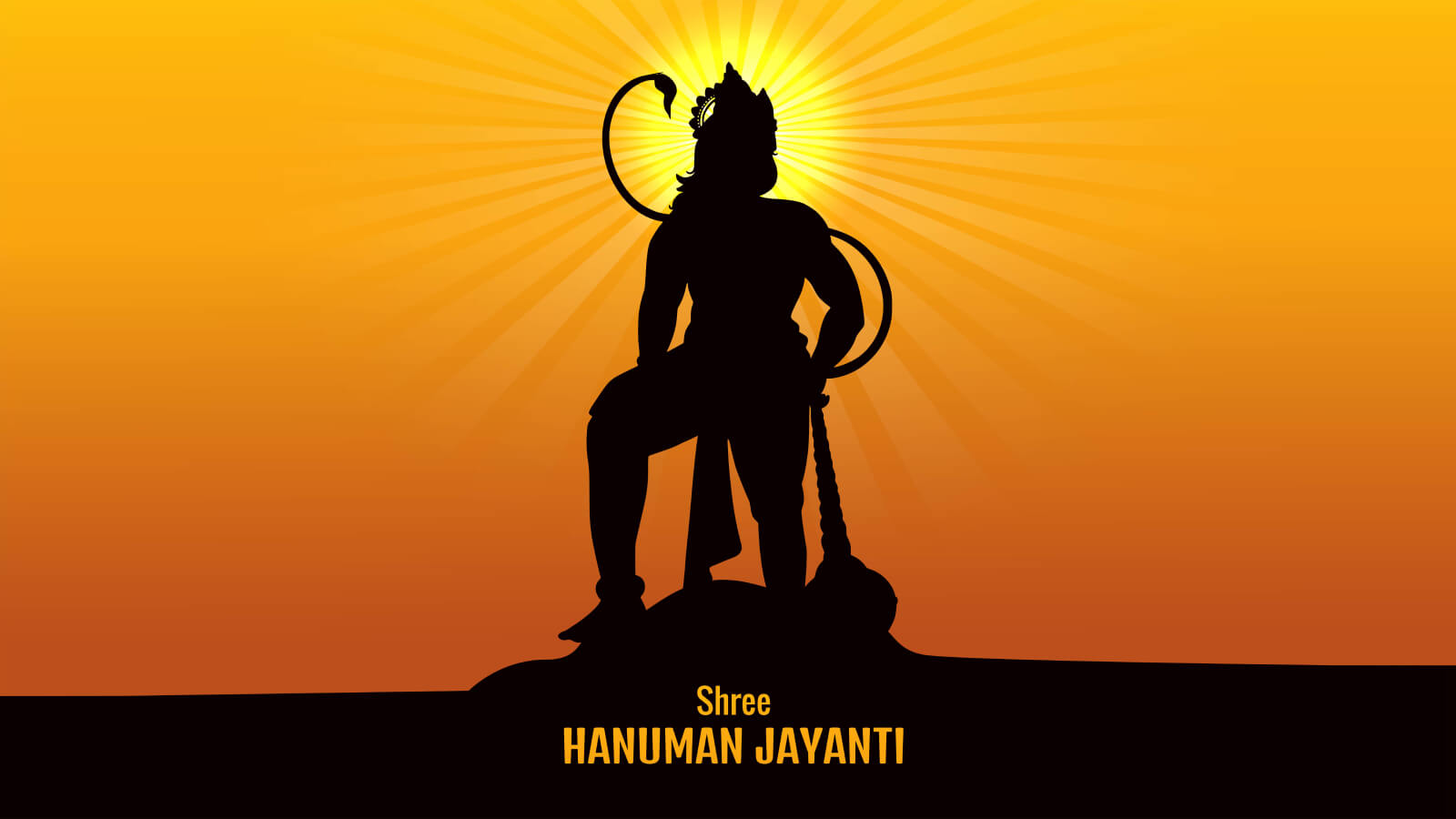Hanuman Jayanti: The Eternal Flame of Devotion and Strength
(Based on the live discourse of Param Dwij)
(परम द्विज के प्रवचन पर आधारित)

In the boundless expanse of Indian spirituality, where every deity reflects a facet of human potential and cosmic truth, Lord Hanuman stands tall — a living embodiment of unwavering devotion, fearless strength, and unconditional surrender.
Hanuman Jayanti, the sacred day commemorating his divine birth, is far more than a festival. It is an awakening — a reminder that within each of us flickers the same divine flame that burned bright in Hanuman’s heart: the flame of bhakti (devotion), seva (service), and shakti (strength).
Celebrated on the full moon day (Purnima) of the Chaitra month, Hanuman Jayanti invites us not just to bow before a deity but to bow within — to the vast, untapped reservoirs of love, courage, and wisdom we carry.
The Symbolism of Hanuman
Lord Hanuman is not just a legendary figure from the Ramayana. He is the eternal servant, the fearless devotee, the bridge between the human and the divine. With the body of a mighty warrior and the heart of a humble saint, Hanuman embodies the perfect harmony between power and purity.
He teaches us: true strength is silent, grounded in humility, and arises from love — not ego. The image of Hanuman tearing open his chest to reveal Rama and Sita residing within is not mere mythology; it is the highest spiritual teaching. When the Divine becomes your very heartbeat, your very breath — then every action becomes an offering.
Such is the way of Living Dwij — living awake, living devoted.
Hanuman’s every leap, every battle, every breath was for one purpose: to serve. He reminds us that the greatest miracles are born from the simplest intention — to love, to serve, and to surrender.
The Relevance of Hanuman Jayanti Today
In an age riddled with anxiety, self-doubt, and a desperate search for validation, Hanuman’s life story stands as a luminous beacon. His fearless leap across the vast ocean to Lanka was not a display of arrogance; it was an expression of pure faith — in his Lord, in his mission, in his own divinely given strength. Today, when we are drowned by fears and insecurities, Hanuman Jayanti calls us to awaken our inner Hanuman:
To leap over the oceans of doubt.
To burn down the fortresses of fear.
To stand unwavering in the face of adversity — not because we are mighty, but because our trust in the Divine is mightier. This is the Living Dwij path — walking not by sight but by inner vision, not by calculation, but by consecration.
Hanuman and the Path of Bhakti
Among the many spiritual paths — karma (selfless action), jnana (self-knowledge), dhyana (meditation) — Hanuman shines as the purest flame of bhakti yoga, the yoga of love and surrender.
He asked for nothing.
He served without expectation.
He loved because love itself was his nature.
When Lakshmana fell wounded in battle, Hanuman did not waste time analyzing or arguing. He soared to the Himalayas and brought the entire mountain — because when you are moved by love, there is no such thing as “too much.” In this world of transactional love, Hanuman reminds us that the highest love is unconditional. The highest service is selfless.
The highest worship is action done in remembrance. On Hanuman Jayanti, as temples echo with the sacred vibrations of the Hanuman Chalisa, as laddoos are offered and sindoor is applied, it is not mere ritual — it is a re-alignment.
A moment where we remember:
“Love is not something we do; love is what we are.”
Hanuman in the Journey of the Self
Spiritually, Hanuman symbolizes the prana (life force) that flows through every living being. He represents the mind that is no longer scattered by distractions but focused wholly on the Divine.
In yogic traditions, Hanuman is revered as the master of breath — the subtle power that connects body and soul, mind and spirit. When we meditate on Hanuman, we are not merely worshipping an external figure. We are invoking that quiet, indomitable strength within —

The strength to break addictions,
The strength to leap over inner limitations,
The strength to stay rooted in love even when the world trembles. This is the Living Dwij journey — not to worship from afar but to awaken from within.
Lessons from Hanuman Jayanti
Here are the timeless lessons Hanuman offers, especially on this sacred day:
1. Devotion Above All
True love doesn’t calculate. Hanuman loved with his entire being without seeking rewards or recognition. Can we love like that — purely, fiercely, freely?
2. Service as Worship
Every action, no matter how small, becomes sacred when done as an offering. Hanuman teaches: Serve without seeking the fruits.
3. Courage Through Surrender
When we surrender to the Divine Will, we tap into a strength beyond our own. Hanuman’s might come from his absolute surrender.
4. Humility in Power
Despite his extraordinary powers, Hanuman remained the humblest servant. Power without humility is poison; power with humility is grace.
5. Faith in the Impossible
What looks impossible to the mind becomes possible through the heart. Hanuman leapt across oceans because he believed — in Rama, in righteousness, in himself.
Conclusion: Becoming Hanuman
Hanuman Jayanti is not just about honouring a deity. It is about recognizing that within us, too, resides a Hanuman — a divine force of love, strength, and surrender waiting to be awakened. Let us not just chant Hanuman’s name with our lips; let us live his spirit with our lives. Let our service be pure. Let our devotion be fearless. Let our strength be humble.
Let our love be unconditional. This is the true way of the Living Dwij — not to merely remember the Divine but to become a living remembrance. This Hanuman Jayanti,
Let us not just seek blessings. Let us become blessings.
Om Shri Hanumate Namah.



